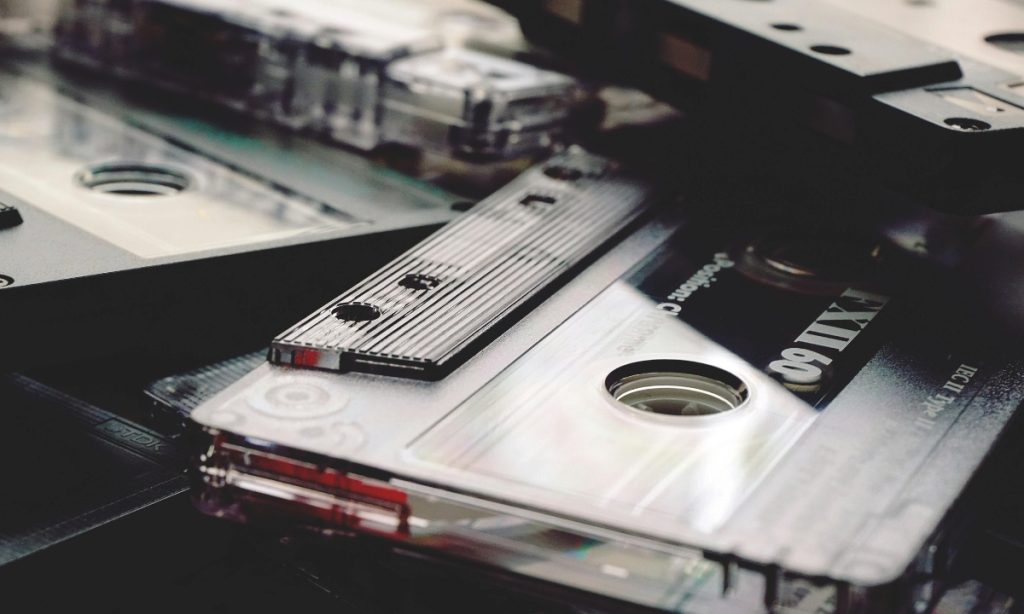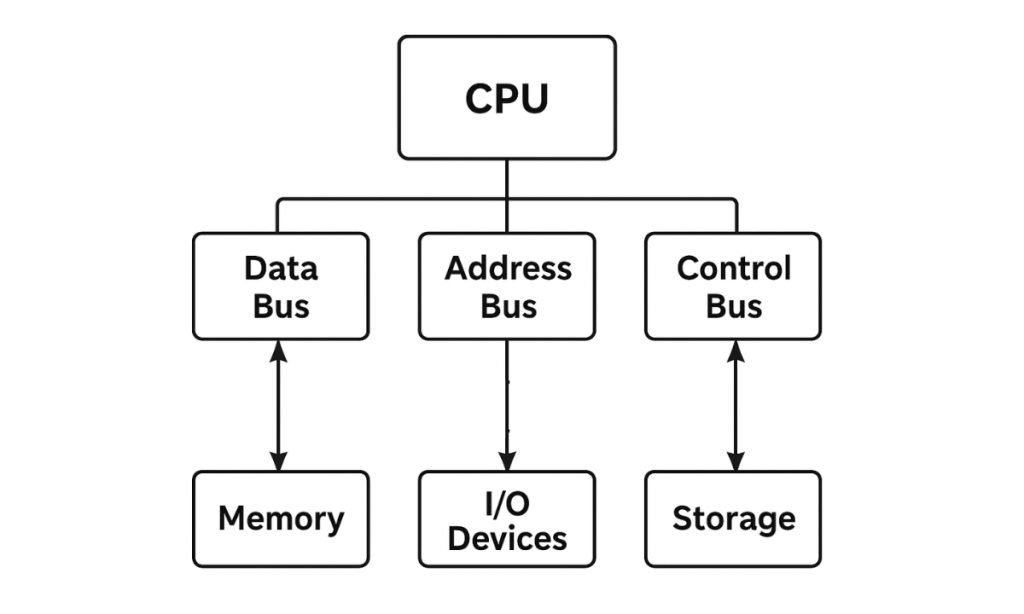Magnetic Tape
Table of Contents
Introduction
Magnetic Tape is a sequential access secondary storage device that stores data in a serial manner on a long, narrow strip of plastic coated with a magnetic material such as iron oxide or chromium dioxide.
It was one of the earliest forms of data storage used in computers and is still used for data backup, archiving, and long-term storage due to its high capacity and low cost.
Physical Structure
- A magnetic tape looks like the tape used in audio or video cassettes.
- It is ½ inch or ¼ inch wide and can be hundreds of meters long.
- The tape is wound on two reels – one supply reel and one take-up reel.
- Between these reels, a read/write head is placed to perform data operations.
- Data is stored in parallel tracks along the length of the tape.
- A block is a group of records stored together on the tape, separated by inter-block gaps (IBG) which help the tape stop and start during reading or writing.
Working Principle
- The magnetic tape moves past the read/write head at a constant speed.
- During the writing process, the head magnetizes portions of the tape surface according to the data pattern (binary 0s and 1s).
- During reading, the magnetic fields on the tape induce small electrical signals in the head, which are converted back into digital data.
- Since the tape stores data sequentially, to access a specific piece of data, the system must wind the tape forward or backward until it reaches the desired position.
Storage Format
- Tracks: Each tape has multiple horizontal lines (tracks) where data is recorded.
- Example: A 9-track tape can store 8 bits of data plus 1 parity bit for error checking.
- Blocks: Data is grouped into blocks separated by small gaps (IBG).
- Record: Each record represents a logical unit of data (like a file or database record).
Types of Magnetic Tape
- Open Reel Tape:
- Used mainly in mainframe computers.
- Stored on large reels (up to 2400 feet long).
- Requires a tape drive mechanism for operation.
- Cartridge Tape:
- Compact and enclosed in a plastic case.
- Commonly used in personal computers and backup devices.
- Easier to handle and less prone to damage.
- Cassette Tape:
- Similar to audio cassettes.
- Used for smaller data storage tasks.
- Inexpensive and easy to use.
Advantages of Magnetic Tape
High Storage Capacity:
- Can store several terabytes (TB) of data on a single reel.
Low Cost:
- Cost per bit of storage is very low compared to other devices.
Portability:
- Lightweight and easy to transport or store offsite.
Durability:
- Can last for 10–30 years if stored in proper environmental conditions.
Ideal for Backup:
- Excellent for archival and disaster recovery storage due to sequential access nature.
Disadvantages of Magnetic Tape
Sequential Access:
- Data cannot be accessed randomly; the tape must be wound from the beginning to the required point.
- Slower than direct access devices like hard disks.
Mechanical Wear:
- Continuous movement causes stretching or wearing out of the tape surface.
Environmental Sensitivity:
- Magnetic tapes can be damaged by dust, humidity, or magnetic fields.
Not Suitable for Online Processing:
- Due to slow access time, it’s not practical for applications requiring frequent data retrieval (like databases or transaction systems).
Applications of Magnetic Tape
- Backup Storage: To keep copies of important data for recovery.
- Archival Storage: For long-term storage of infrequently accessed data.
- Scientific and Government Data Storage: For preserving large research datasets.
- Media Storage: Used in broadcasting to store video and audio data in earlier systems.
Diagram: Magnetic Tape Storage System

The image shows a magnetic tape system used for storing and retrieving data in computers.
Parts of the Diagram
- Supply Reel (Left Side):
- The tape begins from the supply reel.
- It contains the portion of tape that hasn’t been read or written yet.
- The reel slowly unwinds as the tape moves toward the take-up reel.
- Magnetic Tape (Middle Path):
- A long, thin strip of plastic coated with a magnetic material.
- It moves horizontally from left to right.
- The tape surface passes close to the read/write head, where data is stored or retrieved.
- Read/Write Head (Center):
- Placed between the two reels.
- During writing, it magnetizes parts of the tape to represent binary data (0s and 1s).
- During reading, it detects the magnetic signals and converts them back into electrical signals.
- This is the main working component of the system.
- Take-up Reel (Right Side):
- The tape winds onto this reel after reading or writing.
- It keeps the tape moving smoothly during operation.
- Once the process is complete, the tape can be rewound back to the supply reel.
- Arrows (Direction of Motion):
- Arrows are drawn from the supply reel to the take-up reel.
- They show the direction of tape movement during reading or writing.
Explanation of Working
- When data is written, the magnetic head records information on the moving tape surface.
- During reading, the tape again passes over the head, and the recorded data is read sequentially.
- The process continues until the tape reaches the end of the reel.
- To access a particular record, the tape must be rewound or forwarded, as it is a sequential access device.
Visual Summary (in Words)
Imagine:
🎞️ A long tape moving from one reel to another,
🎯 passing over a small metal box (the read/write head) in the center,
📊 where data gets recorded as magnetic patterns.
Comparison Table
| Feature | Magnetic Tape |
|---|---|
| Type | Sequential Access |
| Storage Medium | Plastic coated with magnetic material |
| Access Speed | Slow |
| Storage Capacity | Very High |
| Portability | Good |
| Cost | Low |
| Durability | High (if stored properly) |
| Main Use | Backup, Archival Storage |
Summary
Magnetic tape is a reliable, cost-effective storage medium primarily used for data backup and long-term storage. Although slower than modern devices like hard drives or SSDs, it remains valuable for its large capacity and long lifespan, especially in organizations needing to store massive datasets for years.



